Europe overflows with legendary landmarks that have captured imaginations for centuries. From ancient Roman amphitheaters to fairytale castles, these iconic destinations tell the story of our shared human heritage. Whether you’re planning your first European adventure or adding to your travel bucket list, these 25 must-see wonders represent the very best the continent offers.
1. Eiffel Tower (Paris, France)

Standing tall as Paris’s iron lady, this 324-meter masterpiece was once considered an eyesore by locals. Today, millions flock to witness Gustave Eiffel’s engineering marvel that defines the City of Light’s skyline.
Three observation levels offer breathtaking panoramic views across Paris’s romantic rooftops and winding Seine River. The tower sparkles with 20,000 golden lights every hour after sunset, creating magical moments for visitors below.
Smart travelers take the stairs to the second floor, avoiding lengthy elevator queues while enjoying a unique perspective of the tower’s intricate ironwork and architectural details.
2. Colosseum (Rome, Italy)
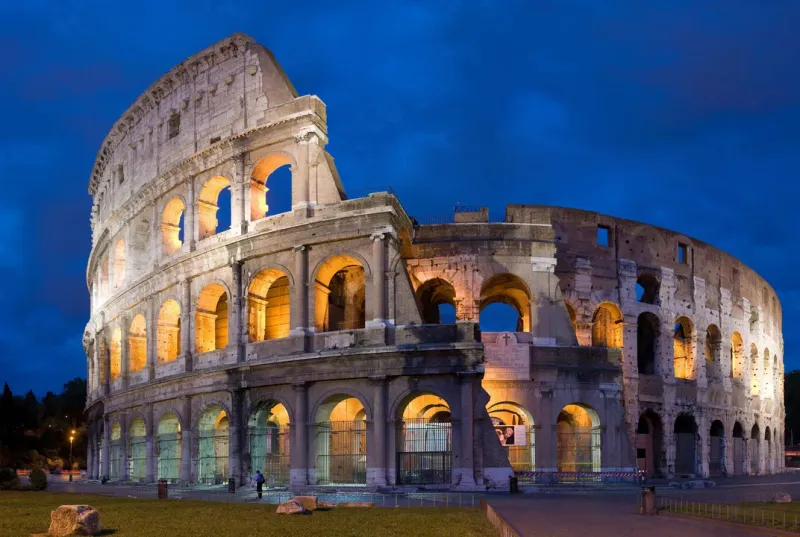
Nearly 2,000 years after its construction, this colossal amphitheater still echoes with the roars of ancient crowds. Rome’s most famous monument once hosted gladiatorial battles, exotic animal hunts, and elaborate naval recreations for up to 80,000 spectators.
Walking through the underground chambers reveals the complex machinery that lifted wild beasts and warriors into the arena. The partially restored floor allows visitors to imagine the sand-covered battlefield where history’s most legendary fighters met their fate.
Evening tours transform this ancient wonder into a hauntingly beautiful experience, with dramatic lighting bringing the weathered stones to life.
3. Acropolis (Athens, Greece)

Perched majestically above modern Athens, this sacred rock cradles the birthplace of democracy and Western civilization. The Parthenon’s marble columns have weathered 2,500 years of history, standing as humanity’s greatest architectural achievement.
Ancient Greeks built this fortress to honor Athena, their patron goddess of wisdom and warfare. Every stone tells stories of philosophers, politicians, and artists who shaped our modern world.
Sunrise visits reward early risers with golden light dancing across ancient marble, while avoiding the scorching Mediterranean heat and overwhelming crowds that arrive later.
4. Sagrada Família (Barcelona, Spain)

Antoni Gaudí’s unfinished cathedral defies every architectural rule, blending Gothic grandeur with Art Nouveau whimsy in ways that seem almost impossible. Construction began in 1882 and continues today, making it the world’s longest-running building project.
Nature inspired every curve and detail, from tree-like columns to organic facades that seem to grow from the earth. The interior resembles a stone forest, with colored light streaming through stained glass windows like sunbeams through leaves.
Tickets disappear weeks in advance due to overwhelming demand, so planning ahead is essential for experiencing this surreal architectural masterpiece firsthand.
5. Big Ben & Houses of Parliament (London, UK)

London’s most recognizable timekeeper has chimed across the Thames for over 160 years, becoming the soundtrack of British democracy. This Gothic Revival masterpiece houses the nation’s political heart, where centuries of parliamentary tradition continue today.
The tower’s official name is Elizabeth Tower, though everyone knows it as Big Ben after its massive 13-ton bell. Each of the four clock faces measures 23 feet across, ensuring Londoners always know the time.
Westminster Bridge provides the perfect vantage point for capturing this iconic duo, especially during golden hour when warm light bathes the honey-colored limestone in magical hues.
6. Brandenburg Gate (Berlin, Germany)
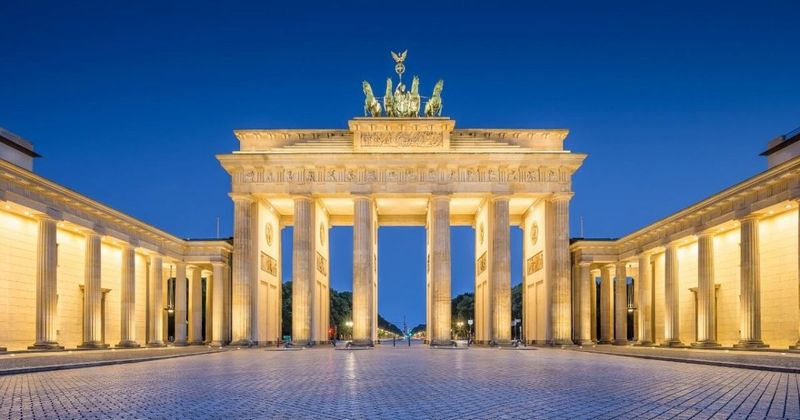
Once dividing a city in two, this neoclassical triumph now symbolizes German reunification and European unity. Napoleon marched through its arches, Hitler held rallies nearby, and Reagan challenged Gorbachev to tear down the wall that stood beside it.
Six towering columns support the Quadriga, a stunning chariot sculpture featuring the goddess of victory. This 18th-century monument has witnessed Berlin’s darkest hours and greatest celebrations, making it Germany’s most emotionally charged landmark.
Nighttime illumination transforms the sandstone structure into a glowing beacon of hope and freedom, creating perfect conditions for memorable photographs and quiet reflection on history’s lessons.
7. Charles Bridge (Prague, Czech Republic)

For over 600 years, this stone masterpiece has connected Prague’s historic districts while serving as an open-air gallery of baroque artistry. Thirty religious statues line the pedestrian walkway, each telling stories of saints and local legends.
Medieval engineers built this Gothic bridge to withstand floods and time, using egg yolks in the mortar for extra strength. Street musicians, artists, and vendors create a carnival atmosphere throughout the day, bringing centuries-old traditions to life.
Dawn breaks reveal the bridge in peaceful solitude, with misty reflections dancing on the Vltava River below and Prague Castle emerging from morning shadows like a fairytale backdrop.
8. St. Basil’s Cathedral (Moscow, Russia)
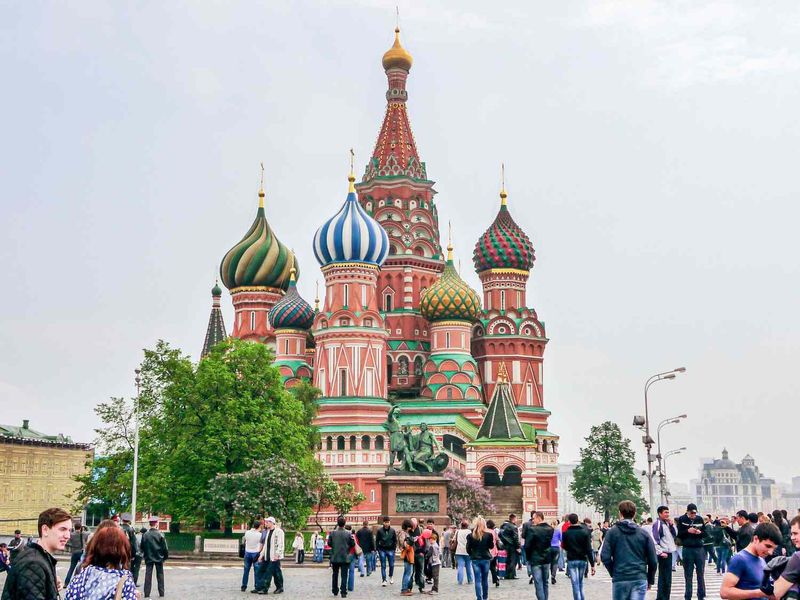
Red Square’s most photographed resident looks like something from a Russian fairytale, with nine colorful onion domes spiraling toward the Moscow sky. Ivan the Terrible commissioned this architectural marvel in 1555 to celebrate military victories over Mongol forces.
Each dome represents a different church, creating a complex of sacred spaces within one extraordinary building. Legend claims the architect was blinded afterward to prevent him from creating anything more beautiful elsewhere.
While the exterior captivates with its rainbow of colors and impossible geometry, the interior reveals even more treasures: intricate frescoes, narrow passages, and intimate chapels that transport visitors into medieval Russian spirituality.
9. Neuschwanstein Castle (Bavaria, Germany)

Walt Disney found his inspiration here, transforming this Bavarian fantasy into the template for every fairytale castle. Mad King Ludwig II poured his fortune into creating this romantic retreat, complete with artificial caves, swan motifs, and breathtaking Alpine views.
Nineteen rooms showcase Ludwig’s obsession with medieval legends and Wagner’s operas, featuring elaborate murals, golden chandeliers, and furniture fit for royalty. The throne room’s Byzantine splendor rivals any European palace.
Marienbrücke bridge offers the classic postcard view, suspended dramatically above a gorge with the castle’s white towers framed perfectly against forested mountains and pristine lakes below.
10. Leaning Tower of Pisa (Pisa, Italy)

The world’s most famous architectural mistake has been defying gravity for over 800 years. Construction began in 1173, but soft soil caused the foundation to sink unevenly, creating the distinctive 3.97-degree tilt that makes tourists worldwide attempt impossible poses.
This eight-story bell tower was meant to showcase Pisa’s wealth and power during the medieval period. Instead, its unintended lean became the city’s greatest tourist attraction, proving that sometimes accidents create the most memorable landmarks.
Climbing the 294 steps provides unique perspectives on the Tuscan countryside, though early morning visits ensure shorter waits and cooler temperatures for the spiraling ascent to the bell chamber.
11. Stonehenge (Wiltshire, UK)

Five thousand years after its construction, this prehistoric puzzle continues baffling archaeologists and captivating imaginations. Massive stones arranged in perfect circles suggest advanced astronomical knowledge, though their builders left no written records explaining their purpose.
Ancient peoples transported 25-ton stones from Wales, over 150 miles away, using only primitive tools and human power. The monument aligns precisely with summer and winter solstices, indicating sophisticated understanding of celestial movements.
Summer solstice celebrations allow rare access inside the stone circle, where thousands gather to witness sunrise illuminating these mysterious megaliths exactly as intended by their long-vanished creators.
12. Dubrovnik City Walls (Dubrovnik, Croatia)

Medieval fortifications encircle this “Pearl of the Adriatic” like a stone crown, offering two kilometers of elevated walkways above terracotta rooftops and crystalline waters. These walls protected the independent Republic of Ragusa for centuries, withstanding Ottoman sieges and Venetian threats.
The circuit takes about two hours, revealing hidden gardens, ancient cannons, and panoramic vistas that stretch across the shimmering Adriatic to distant islands. Game of Thrones fans recognize these ramparts as King’s Landing’s backdrop.
Early morning walks beat the cruise ship crowds and scorching summer heat, while providing optimal lighting conditions for photographing the limestone walls against the deep blue sea.
13. Blue Lagoon (Grindavík, Iceland)

This otherworldly geothermal spa emerged accidentally from a nearby power plant, creating Iceland’s most surreal bathing experience. Mineral-rich waters maintain perfect temperatures year-round while surrounded by dramatic black lava fields that look like alien landscapes.
Silica mud masks and algae treatments provide natural spa therapies in waters that reach depths of 40 feet. The milky blue color comes from silica particles that reflect light in magical ways, especially during Iceland’s long summer days.
Late-night soaks under star-filled Arctic skies offer the most peaceful experience, with possibilities of witnessing the Northern Lights dancing overhead while soaking in the warm, healing waters.
14. Anne Frank House (Amsterdam, Netherlands)

Behind a bookcase in this 17th-century canal house, a young girl wrote diary entries that would touch millions of hearts worldwide. Anne Frank’s secret annex preserved her family’s hiding place exactly as they left it in 1944.
Narrow staircases lead to cramped rooms where eight people lived in silence for over two years, fearing discovery by Nazi forces. Personal belongings, photographs, and Anne’s actual diary create deeply moving encounters with history’s darkest chapter.
Advanced online reservations are essential, as tickets sell out months ahead. This powerful museum reminds visitors why tolerance and human rights remain precious gifts requiring constant protection and vigilance.
15. Plitvice Lakes (Croatia)

Sixteen terraced lakes cascade through pristine forests, connected by waterfalls that tumble over natural limestone barriers. This UNESCO World Heritage site showcases nature’s artistry through crystal-clear waters that shift from azure to green to turquoise throughout the day.
Wooden walkways wind through untouched wilderness where bears, wolves, and rare birds still roam freely. Each season transforms the landscape: spring brings wildflowers, summer offers warm swimming, autumn paints forests golden, and winter creates ice sculptures.
Autumn visits reward travelers with fewer crowds and spectacular foliage reflections in mirror-like waters, while comfortable temperatures make hiking the park’s numerous trails pure pleasure rather than endurance tests.
16. Mont Saint-Michel (Normandy, France)
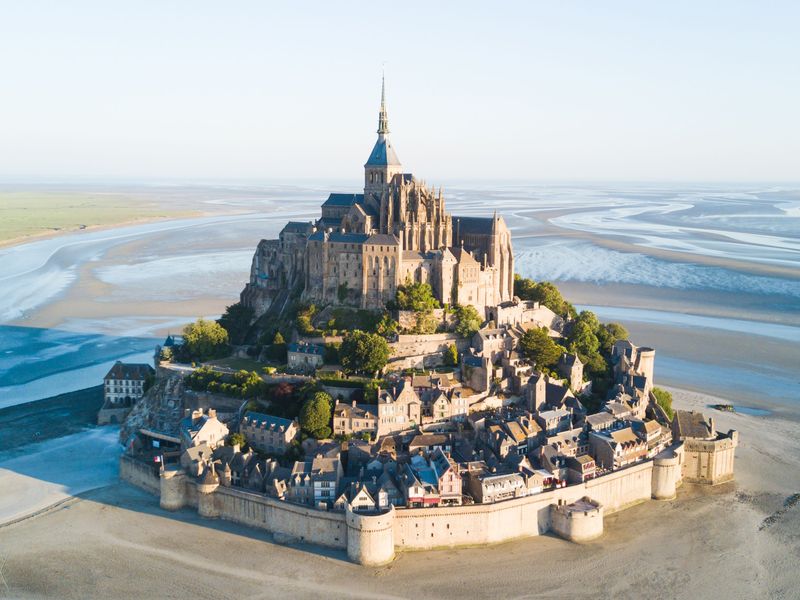
Rising dramatically from tidal waters like a medieval mirage, this Gothic abbey has inspired pilgrims for over 1,000 years. Massive tides transform the surrounding landscape twice daily, sometimes isolating the mount completely from mainland France.
Narrow cobblestone streets spiral upward through a fortified village toward the abbey’s soaring spires. Medieval architecture reaches impossible heights, with the church perched 80 meters above sea level on solid granite foundations.
Tide schedules determine the best viewing times, when rushing waters surround the mount completely, creating the magical illusion of a castle floating on an endless sea beneath Norman skies.
17. Alhambra (Granada, Spain)
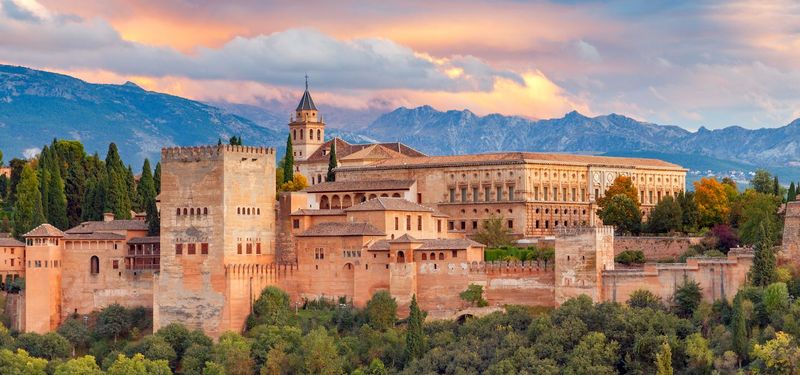
Islamic artistry reached its European pinnacle in this Moorish palace complex, where geometric patterns and flowing Arabic calligraphy cover every surface. Eight centuries after construction, the Alhambra remains the finest example of Islamic architecture outside the Middle East.
Tranquil courtyards feature reflecting pools and fountain gardens that create cooling microclimates in Spain’s scorching Andalusian heat. The Palace of Lions showcases mathematical precision in marble columns and intricate muqarnas ceilings that seem to defy gravity.
Visitor numbers are strictly limited to preserve these fragile treasures, making advance booking essential. Reservations open exactly three months ahead and disappear within hours due to overwhelming global demand.
18. Santorini Caldera (Greece)

Volcanic forces sculpted this crescent-shaped island from ancient eruptions, creating one of the Mediterranean’s most photographed landscapes. Whitewashed villages cling to cliff edges 400 meters above a submerged crater filled with impossibly blue Aegean waters.
Sunset viewing in Oia village attracts crowds from around the world, though neighboring Imerovigli offers equally spectacular views with fewer people. Blue-domed churches and traditional cycladic architecture provide perfect foregrounds for endless photography opportunities.
Local wines benefit from volcanic soil that imparts unique mineral flavors, while black sand beaches remind visitors of the island’s explosive geological origins beneath paradise-like beauty.
19. Edinburgh Castle (Scotland, UK)

Perched on an extinct volcano, this fortress has dominated Scotland’s capital for over 1,000 years. Kings and queens called it home while defending against English invasions, making it the most besieged castle in British history.
The Stone of Destiny rests here between coronations, while the Honours of Scotland showcase the oldest crown jewels in Britain. Military museums display centuries of Scottish martial heritage, from medieval battles to modern conflicts.
The One O’Clock Gun fires daily except Sundays, a tradition dating to 1861 that once helped ships in nearby ports synchronize their chronometers for accurate navigation across treacherous seas.
20. Hallstatt (Austria)
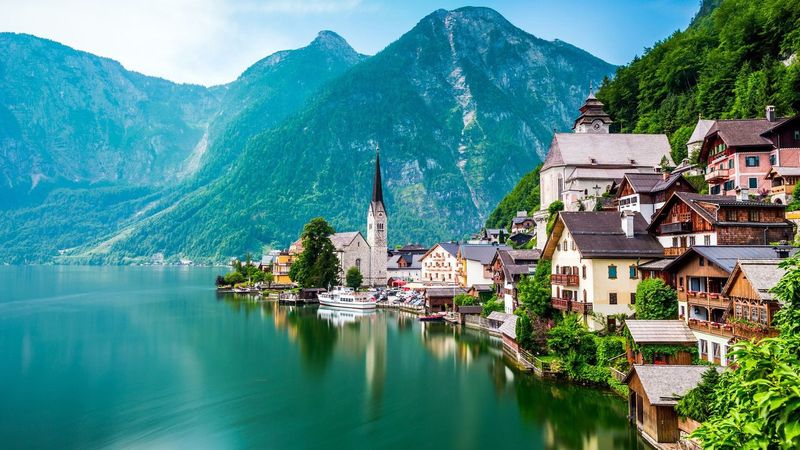
Nestled between pristine alpine lake and towering peaks, this 4,000-year-old village epitomizes Austrian charm. Salt mining created Hallstatt’s wealth, with ‘white gold’ deposits so valuable they gave the entire Hallstatt period its archaeological name.
Pastel-colored houses reflect perfectly in Lake Hallstatt’s mirror-like surface, creating postcard scenes that seem almost too beautiful for reality. The bone chapel displays 1,200 painted skulls, a unique tradition reflecting limited burial space in this mountain valley.
Early morning arrivals before 9 AM avoid tour bus crowds and capture the village in peaceful solitude, with morning mist often creating ethereal effects across the lake’s glassy surface.
21. Vatican City (Rome, Italy)
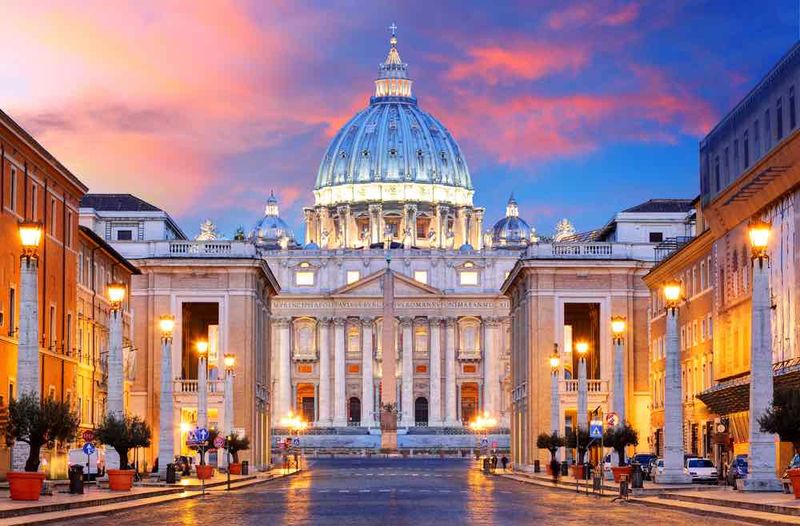
The world’s smallest sovereign nation packs incredible artistic treasures into just 121 acres. St. Peter’s Basilica showcases Michelangelo’s genius, while the Sistine Chapel ceiling remains humanity’s greatest artistic achievement.
Papal audiences and religious ceremonies continue traditions spanning nearly 2,000 years of Christian history. The Vatican Museums house the world’s largest private art collection, accumulated by popes who patronized history’s greatest masters.
Dress codes require covered shoulders and knees for entry, while security screening resembles airport procedures due to the priceless artworks and religious significance housed within these ancient walls.
22. Northern Lights (Tromsø, Norway)

Aurora Borealis dances across Arctic skies in ribbons of green, purple, and gold that seem to touch the earth itself. This natural phenomenon occurs when solar particles collide with atmospheric gases 100 kilometers above Norway’s pristine wilderness.
Tromsø’s location above the Arctic Circle provides optimal viewing conditions, while the city’s infrastructure makes aurora hunting comfortable rather than survival-challenging. Clear, dark skies away from light pollution offer the best chances for witnessing nature’s greatest light show.
October through March provides peak viewing season, with long polar nights creating perfect conditions for photography and wonder-struck contemplation of our planet’s magnetic mysteries.
23. Matterhorn (Zermatt, Switzerland)

This pyramid-shaped peak has become Switzerland’s most recognizable symbol, inspiring everything from Toblerone chocolate packaging to Disneyland roller coasters. At 4,478 meters, the Matterhorn’s distinctive silhouette dominates the Alpine horizon like a natural skyscraper.
Zermatt village remains car-free, accessible only by train through dramatic mountain valleys. Electric vehicles and horse-drawn carriages maintain the peaceful atmosphere essential for appreciating the surrounding peaks in pristine silence.
The Gornergrat Railway climbs to 3,089 meters, offering panoramic views of 29 peaks over 4,000 meters high, including close-up perspectives of the Matterhorn that reveal why early climbers considered it impossible to conquer.
24. Rila Monastery (Bulgaria)

Hidden in Bulgaria’s highest mountains, this Orthodox masterpiece survived five centuries of Ottoman rule through sheer determination and strategic isolation. Vivid frescoes cover every surface, depicting biblical scenes in colors that remain brilliant after 500 years.
The monastery’s founder, Saint Ivan of Rila, chose this remote location for spiritual contemplation away from worldly distractions. Today, the complex houses Bulgaria’s most important religious and cultural treasures, including ancient manuscripts and religious artifacts.
Combining visits with hikes to the nearby Seven Rila Lakes creates perfect mountain adventures, with pristine alpine scenery providing dramatic backdrops for photography and peaceful reflection on Bulgaria’s hidden natural wonders.
25. Cliffs of Moher (Ireland)

These dramatic sea cliffs plunge 214 meters into the churning Atlantic, creating Ireland’s most spectacular coastal scenery. Eight kilometers of cliff-top paths offer breathtaking views across the Aran Islands to distant Galway Bay on clear days.
Puffins nest in cliff crevices during summer months, while Atlantic storms create thunderous wave crashes that can be felt through solid rock. The visitor center provides shelter and information, though the real magic happens outdoors facing the endless ocean.
Walking south toward Hag’s Head rewards adventurous visitors with solitude and unspoiled perspectives, away from tour bus crowds that cluster around the main viewing areas near the visitor facilities.


